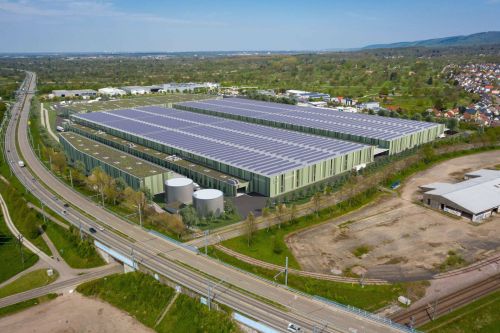Four times lucky...?
Feature
The three billion euro spent on Polish properties is a decent result, even though some expected 2014 to close with half a billion more. Nevertheless, it confirms the stability of the Polish market, where similar investor activity has taken place for the last three years. This has allowed Poland to shine in the CEE ranking. According to data compiled by CBRE, the second country in the ranking is the Czech Republic, with a turnover of just under EUR 2 bln. However, it is worth noting that in this case, compared to the levelling out of the Polish market, over the Carpathians around 50 pct more was spent than in 2013. In Hungary, the turnover on the investment property market increased by almost 70 pct to EUR 460 mln. However, it was Romania that turned out to be the true black horse of the region in 2014, as investors bought properties with a total value of over EUR 1.1 bln. This is over 220 pct more than in 2013. The highest decline was registered in Russia, which probably comes as no surprise to anybody. With a turnover of EUR 2.2 bln, Russian investment decreased by 57 pct.
Retail is weaker, warehouses break the record
The stabilisation in the level of turnover on the Polish market does not mean that nothing is changing. There has been quite a lot of reshuffling in the structure of investors’ purchases, with the most eagerly sought after product being offices. According to research by Cushman & Wakefield, properties with a combined value of over EUR 1.4 bln were sold in the office sector in Poland in 2014. Warehouses came second in the ranking, which was also something of a surprise. The turnover in this segment hit a record high of almost PLN 700 mln. Retail properties were pushed back into third place for the first time in history to EUR 0.55 bln, constituting a decline of 60 pct compared to 2013. “In spite of a number of significant transactions, there were considerably fewer with values in excess of EUR 100 mln compared to the previous year, and as a result the total volume of transactions declined considerably. The basic reason for the fall in investment activity was the low supply of attractive facilities in the largest cites, which normally reach higher prices both in terms of the nominal value and the yields,” believes Łukasz Lorencki, a senior consultant in the capital markets group at Cushman & Wakefield. “Because of the limited offer in the largest urban centres, investor interest has shifted to towns with 100,000–500,000 inhabitants, as reflected by the sale of shopping centres in Płock and Bydgoszcz. We expect that the trend will become even stronger in 2015,” predicts Łukasz Lorencki. High streets, which in spite of their great potential are still not having the same kind of impact as shopping centres, are still expected to be represent an important opportunity for the retail market. “The Polish market still includes an investment niche in the form of high streets. This is part of the market that has only developed to a small degree, whereas it should constitute an alternative to the offer of shopping centres – even more so considering the fact that many foreign investors are interested in investing in this retail format and customers are become ever more willing to spend their time in city centres, including doing their shopping there. For dynamic growth in Polish high streets to be able to happen, there is a need for legislative intervention and the passing of a reprivatisation act to regulate the issue of ownership on the property market,” says Beata Kokeli, the senior director of CBRE’s retail department. Regardless of whether the high streets will eventually start conquering the Polish market or not, there will be strong supply pressure from shopping centres. “If developers’ plans are implemented, we can expect an intensive year on the retail market in Poland,” predicts Anna Bartoszewicz-Wnuk, the director of the market research and consultancy department at JLL. “According to preliminary estimates based on the plans of developers, as much as 500,000 sqm of new shopping centres could be launched onto the market in 2015. The total new retail stock, which apart from shopping centres also includes retail parks, outlet centres and detached warehouse facilities, could also reach as much as 700,000 sqm,” adds Anna Bartoszewicz-Wnuk.
Direction – the regions
The retail market is not the only one where the role of regional cities and towns is set to grow. According to Łukasz Lorencki, in 2015 the demand for attractive office properties should increase even more, but repeating the 2014 result will depend on there being enough supply to satisfy it, which might be difficult to achieve, particularly in Warsaw where vacancy has been growing. Due to the growing vacancy rate in the capital and the expansion of the BPO sector tenants looking for large premises in regional cities, the number of office transactions outside the capital city has been growing. Apart from Warsaw the most popular cities are Kraków (five transactions in 2014) and Wrocław (three transactions). Investor interest in the regions could be even greater if developers complete more offices. And their plans for this year are so ambitious that the regions could gain app. 60 pct of the new offices due for completion in 2015. “According to JLL’s preliminary estimates, which are based on information received from developers, the supply of modern office space in Poland could increase by app. 730,000 sqm in 2015,” estimates Mateusz Polkowski, the director of the market research and consultancy department at JLL. “Warsaw will remain the most active market, possibly gaining as much as 320,000 sqm of new offices. This year will also be an active one for Kraków as developers are planning to put into operation as much as 114,000 sqm in the city. Wrocław and the TriCity can also expect an intensive year – with predicted new supply of 91,000 sqm and 87,000 sqm respectively. If the announced projects are put into operation on schedule, the total office supply in Poland could grow to as much as 8 mln sqm,” claims Mateusz Polkowski.
Warehouse phenomenon
However, it is the warehouse and logistics sector that has stirred things up the most on the Polish investment market. In 2014 it reached the level of EUR 683 mln in 2014, thus beating its historical record and exceeding 2012 – its best year so far – by almost a half. For the first time in history warehouses have outperformed retail and become the second largest sector of the investment market. There’s a lot of evidence that this year will be a successful one for the segment, too. “2014 was mainly a year of significant ownership changes on the warehouse market. As a result Prologis, Segro and Logicor now hold the most industrial square metres on the Polish market. Investors are still showing a great deal of interest in the warehouse segment, looking for new products and planning their next purchases. In 2015 we can expect a continuation of this trend,” argues Joanna Sinkiewicz, the senior negotiator in the industrial and warehouse department at Cushman & Wakefield. Investors should not be short of attractive new facilities to choose from, including those in new locations that have so far not been associated with the segment. “The larger projects will most probably take the form of build-to-suit contracts. Meanwhile, the number of speculative projects will remain limited as developers continue to be cautious about such investment. Despite this such facilities could be built in regions with low vacancy of around 20,000 sqm. New investment can be expected to take place in smaller cities – with new complexes to be built in Rzeszów, Lublin and a number of smaller towns in Western Poland,” forecasts Łukasz Grupa, a senior specialist in the logistics and industrial department at Colliers International.
Capital from across the globe
The attractiveness of the Polish property investment market is confirmed by the flow of capital into from around the world. According to Cushman & Wakefield, in previous years the largest group of investors had been German funds, whereas in 2014 entities with American capital were the leading investors for the first time in three years, with a market share of almost 40 pct. Starwood, a new player on our market, was mostly responsible for the change in terms of the balance of power, as well as two other American funds: Blackstone and Prologis. Polish capital is starting to make its presence felt, too. At the end of 2014, PZU Fundusz Inwestycyjny Zamknięty Sektora Nieruchomości 2 purchased a warehouse portfolio from Panattoni for EUR 140 mln. Capital from the eastern part of the globe is playing an ever more important role and it could be very active this year. “It is highly probable that investors from Asia and the Middle East will increase their interest in Central Europe, starting with Warsaw or Prague,” forecasts Soren Rodian Olsen, the director of office, industrial and warehouse property investment in the capital markets group at Cushman & Wakefield in Poland. Faced with a relatively limited supply of prime facilities it might be expected that opportunistic investors will continue their strong interest, since they are more prepared to take on greater risks and therefore more likely to venture off the beaten investment tracks. ν






















































